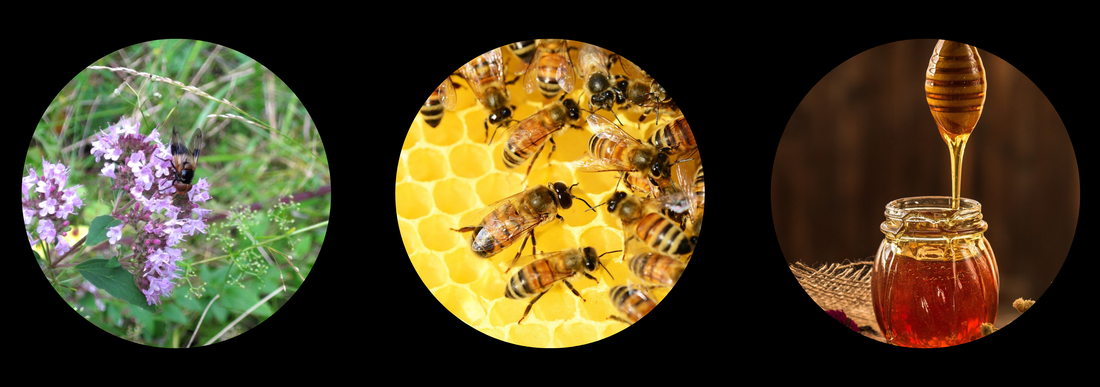All you need to know about Real Honey
Important Note:
|
In this article we are talking about Natural, Raw, Biological and Non Pasteurized Honey.
Most cheap honey in the grocery stores and supermarkets is not real honey. You often end-up buying fructose with colorants. A simple sugar bomb that has non of the mentioned health benefits. Instead it's harmful for your health. |
Nutrition:
Honey contains specific nutrients that can make it a healthful addition to the diet.
The exact nutrition and chemical composition of raw honey varies between different countries and environments and depends partly upon which types of flowers the bees gather their nectar from. Regardless of these factors, honey still contains healthful compounds, such as antioxidants, amino acids, and vitamins.
One tablespoon or 21 grams (g) of raw honey contains 64 calories and 16 g of sugar. These values may vary between brands and batches.
One tablespoon or 21 grams (g) of raw honey contains 64 calories and 16 g of sugar. These values may vary between brands and batches.
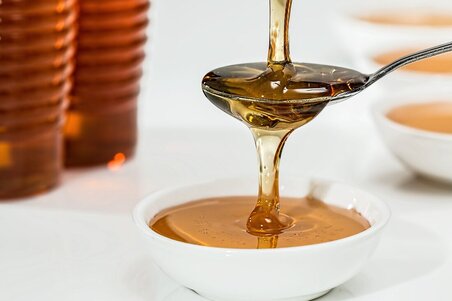
Natural honey naturally contains small amounts of the following vitamins and minerals:
- niacin
- riboflavin
- pantothenic acid
- calcium
- magnesium
- manganese
- potassium
- phosphorous
- zinc
Honey naturally contains sugar. A little more than half of the sugar in honey is fructose. Research has linked fructose to various health problems.
However, even with its fructose content, honey may be a healthier option than table sugar. Some research suggests that honey may offer a protective effect against diabetes and some types of honey may help improve cholesterol levels.
People who have diabetes or who are on sugar-restricted diets may choose to eat honey in moderation to avoid significant changes in their blood sugar levels. Pure honey has a glycemic index (GI) of 58, meaning it has a medium effect on blood sugar levels.
However, even with its fructose content, honey may be a healthier option than table sugar. Some research suggests that honey may offer a protective effect against diabetes and some types of honey may help improve cholesterol levels.
People who have diabetes or who are on sugar-restricted diets may choose to eat honey in moderation to avoid significant changes in their blood sugar levels. Pure honey has a glycemic index (GI) of 58, meaning it has a medium effect on blood sugar levels.
The Different Health Benefits:
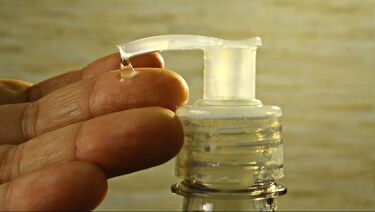
1- Antibacterial and anti-fungal properties:
Research has shown that raw honey can kill unwanted bacteria and fungus. It naturally contains hydrogen peroxide, an antiseptic. Its effectiveness as an antibacterial or anti-fungal varies depending on the honey, but it’s clearly more than a folk remedy for these kinds of infections.
Research has shown that raw honey can kill unwanted bacteria and fungus. It naturally contains hydrogen peroxide, an antiseptic. Its effectiveness as an antibacterial or anti-fungal varies depending on the honey, but it’s clearly more than a folk remedy for these kinds of infections.
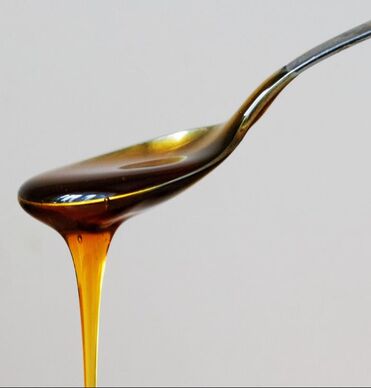
2- Honey Is "Less Bad" Than Sugar for Diabetics:
The evidence on honey and diabetes is mixed.
On one hand, it can reduce several risk factors for heart disease common in people with type 2 diabetes.
For example, it may lower “bad” LDL cholesterol, triglycerides and inflammation while raising “good” HDL cholesterol.
However, some studies have found that it can also increase blood sugar levels — just not as much as refined sugar.
While honey may be slightly better than refined sugar for people with diabetes, it should still be consumed with caution.
In fact, people with diabetes may do best by minimizing all high-carb foods.
Keep in mind, too, that certain types of honey may be adulterated with plain syrup. Although honey adulteration is illegal in most countries, it remains a widespread problem.
The evidence on honey and diabetes is mixed.
On one hand, it can reduce several risk factors for heart disease common in people with type 2 diabetes.
For example, it may lower “bad” LDL cholesterol, triglycerides and inflammation while raising “good” HDL cholesterol.
However, some studies have found that it can also increase blood sugar levels — just not as much as refined sugar.
While honey may be slightly better than refined sugar for people with diabetes, it should still be consumed with caution.
In fact, people with diabetes may do best by minimizing all high-carb foods.
Keep in mind, too, that certain types of honey may be adulterated with plain syrup. Although honey adulteration is illegal in most countries, it remains a widespread problem.

3- High-Quality Honey Is Rich in Antioxidants:
Researchers believe that some of the main health benefits from honey come from its antioxidant content.
Natural honey contains a range of compounds that act as antioxidants, including phytochemicals, flavonoids, and ascorbic acid.
Antioxidants reduce oxidative stress in the body by mopping up free radicals. Scientists have linked oxidative stress to a range of chronic health conditions, including many cancers. By eating an antioxidant-rich diet, people can reduce their risk of chronic disease.
Some people believe that pasteurization reduces the number of antioxidants in the honey, meaning that pasteurized honey may not offer the same benefits as raw honey.
There is no specific research into how pasteurization affects the antioxidants in honey, but studies show that heating other foods can reduce their antioxidant content.
Scientists believe that the combination of these compounds gives honey its antioxidant power.
Interestingly, two studies have shown that buckwheat honey increases the antioxidant value of your blood.
Antioxidants have been linked to reduced risk of heart attacks, strokes and some types of cancer. They may also promote eye health.
Researchers believe that some of the main health benefits from honey come from its antioxidant content.
Natural honey contains a range of compounds that act as antioxidants, including phytochemicals, flavonoids, and ascorbic acid.
Antioxidants reduce oxidative stress in the body by mopping up free radicals. Scientists have linked oxidative stress to a range of chronic health conditions, including many cancers. By eating an antioxidant-rich diet, people can reduce their risk of chronic disease.
Some people believe that pasteurization reduces the number of antioxidants in the honey, meaning that pasteurized honey may not offer the same benefits as raw honey.
There is no specific research into how pasteurization affects the antioxidants in honey, but studies show that heating other foods can reduce their antioxidant content.
Scientists believe that the combination of these compounds gives honey its antioxidant power.
Interestingly, two studies have shown that buckwheat honey increases the antioxidant value of your blood.
Antioxidants have been linked to reduced risk of heart attacks, strokes and some types of cancer. They may also promote eye health.

4- The Antioxidants in It Can Help Lower Blood Pressure:
Blood pressure is an important risk factor for heart disease, and honey may help lower it.
This is because it contains antioxidant compounds that have been linked to lower blood pressure.
Studies in both rats and humans have shown modest reductions in blood pressure from consuming honey.
Blood pressure is an important risk factor for heart disease, and honey may help lower it.
This is because it contains antioxidant compounds that have been linked to lower blood pressure.
Studies in both rats and humans have shown modest reductions in blood pressure from consuming honey.

5- The Antioxidants in It Are Linked to Other Beneficial Effects on Heart Health:
Again, honey is a rich source of phenol's and other antioxidant compounds. Many of these have been linked to a reduced risk of heart disease.
They may help the arteries in your heart dilate, increasing blood flow to your heart. They may also help prevent blood clot formation, which can lead to heart attacks and strokes.
Furthermore, one study in rats showed that honey protected the heart from oxidative stress.
All told, there is no long-term human study available on honey and heart health. Take these results with a grain of salt.
Again, honey is a rich source of phenol's and other antioxidant compounds. Many of these have been linked to a reduced risk of heart disease.
They may help the arteries in your heart dilate, increasing blood flow to your heart. They may also help prevent blood clot formation, which can lead to heart attacks and strokes.
Furthermore, one study in rats showed that honey protected the heart from oxidative stress.
All told, there is no long-term human study available on honey and heart health. Take these results with a grain of salt.
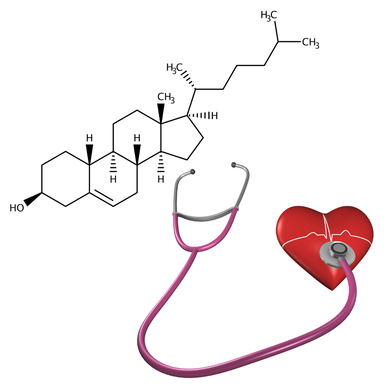
6- Honey Also Helps Improve Cholesterol:
High LDL cholesterol levels is a strong risk factor for heart disease.
This type of cholesterol plays a major role in atherosclerosis, the fatty buildup in your arteries that can lead to heart attacks and strokes.
Interestingly, several studies show that honey may improve your cholesterol levels.
It reduces total and “bad” LDL cholesterol while significantly raising “good” HDL cholesterol.
For example, one study in 55 patients compared honey to table sugar and found that honey caused a 5.8% reduction in LDL and a 3.3% increase in HDL cholesterol. It also led to modest weight loss of 1.3%.
High LDL cholesterol levels is a strong risk factor for heart disease.
This type of cholesterol plays a major role in atherosclerosis, the fatty buildup in your arteries that can lead to heart attacks and strokes.
Interestingly, several studies show that honey may improve your cholesterol levels.
It reduces total and “bad” LDL cholesterol while significantly raising “good” HDL cholesterol.
For example, one study in 55 patients compared honey to table sugar and found that honey caused a 5.8% reduction in LDL and a 3.3% increase in HDL cholesterol. It also led to modest weight loss of 1.3%.
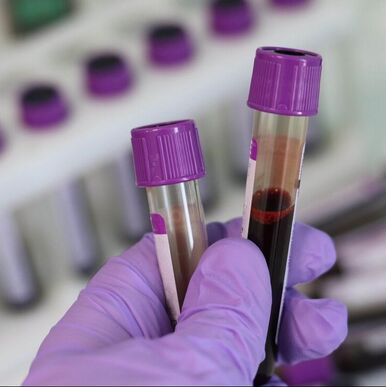
7- Honey Can Lower Triglycerides:
Elevated blood triglycerides are another risk factor for heart disease.
They are also associated with insulin resistance, a major driver of type 2 diabetes.
Triglyceride levels tend to increase on a diet high in sugar and refined carbs.
Interestingly, multiple studies have linked regular honey consumption with lower triglyceride levels, especially when it is used to replace sugar.
For example, one study comparing honey and sugar found 11–19% lower triglyceride levels in the honey group.
Elevated blood triglycerides are another risk factor for heart disease.
They are also associated with insulin resistance, a major driver of type 2 diabetes.
Triglyceride levels tend to increase on a diet high in sugar and refined carbs.
Interestingly, multiple studies have linked regular honey consumption with lower triglyceride levels, especially when it is used to replace sugar.
For example, one study comparing honey and sugar found 11–19% lower triglyceride levels in the honey group.

8- Honey Promotes Burn and Wound Healing:
Topical honey treatment has been used to heal wounds and burns since ancient Egypt and is still common today.
A review of 26 studies on honey and wound care found honey most effective at healing partial-thickness burns and wounds that have become infected after surgery.
Honey is also an effective treatment for diabetic foot ulcers, which are serious complications that can lead to amputation.
One study reported a 43.3% success rate with honey as a wound treatment. In another study, topical honey healed a whopping 97% of patients’ diabetic ulcers .
Researchers believe that honey’s healing powers come from its antibacterial and anti-inflammatory effects as well as its ability to nourish surrounding tissue.
What's more, it can help treat other skin conditions, including psoriasis and herpes lesions.
Manuka honey is considered especially effective for treating burn wounds. Read more about its benefits here.
Topical honey treatment has been used to heal wounds and burns since ancient Egypt and is still common today.
A review of 26 studies on honey and wound care found honey most effective at healing partial-thickness burns and wounds that have become infected after surgery.
Honey is also an effective treatment for diabetic foot ulcers, which are serious complications that can lead to amputation.
One study reported a 43.3% success rate with honey as a wound treatment. In another study, topical honey healed a whopping 97% of patients’ diabetic ulcers .
Researchers believe that honey’s healing powers come from its antibacterial and anti-inflammatory effects as well as its ability to nourish surrounding tissue.
What's more, it can help treat other skin conditions, including psoriasis and herpes lesions.
Manuka honey is considered especially effective for treating burn wounds. Read more about its benefits here.
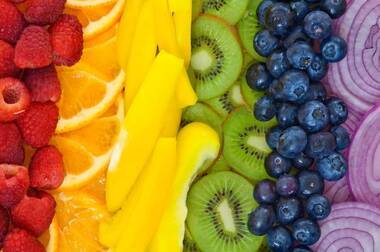
9- Phytonutrient powerhouse:
Phytonutrients (defintion on Wikipedia) are compounds found in plants that help protect the plant from harm. For example, some keep insects away or shield the plant from ultraviolet radiation.
The phytonutrients in honey are responsible for its antioxidant properties, as well as its antibacterial and anti-fungal power. They’re also thought to be the reason raw honey has shown immune-boosting and anticancer benefits. Heavy processing destroys these valuable nutrients.
Phytonutrients (defintion on Wikipedia) are compounds found in plants that help protect the plant from harm. For example, some keep insects away or shield the plant from ultraviolet radiation.
The phytonutrients in honey are responsible for its antioxidant properties, as well as its antibacterial and anti-fungal power. They’re also thought to be the reason raw honey has shown immune-boosting and anticancer benefits. Heavy processing destroys these valuable nutrients.

10- Strengthens Immune system:
Honey has countless medicinal properties that naturally help in curing a sore throat. Its antioxidants and bacteria-fighting assets also help against fighting infections that are caused by viruses, bacteria and fungi. According to doctors and scientists, buckwheat honey has the highest number of antioxidants and when consumed daily can be beneficial for boosting immunity in the long run and this is why honey has known to be one of the best immunity boosting foods. It is always advisable to consume honey every morning before breakfast or even workout to get an extra kick of energy for the whole day. It also works as a cleansing toner which improves immunity in children.
Honey has countless medicinal properties that naturally help in curing a sore throat. Its antioxidants and bacteria-fighting assets also help against fighting infections that are caused by viruses, bacteria and fungi. According to doctors and scientists, buckwheat honey has the highest number of antioxidants and when consumed daily can be beneficial for boosting immunity in the long run and this is why honey has known to be one of the best immunity boosting foods. It is always advisable to consume honey every morning before breakfast or even workout to get an extra kick of energy for the whole day. It also works as a cleansing toner which improves immunity in children.
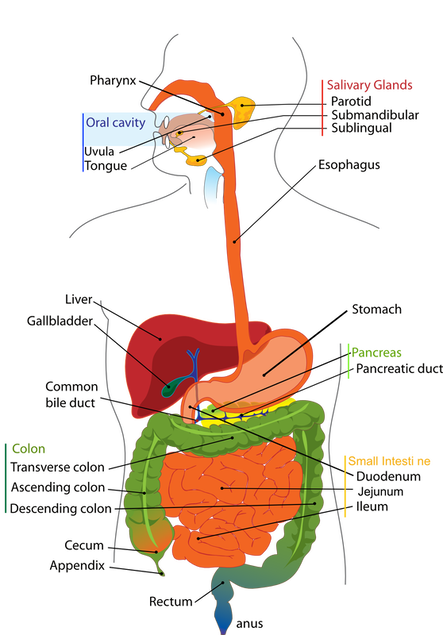
11- Help for digestive issues:
Honey is sometimes used to treat digestive issues such as diarrhea, though there isn’t much research to show that it works. It’s proven to be effective as a treatment for Helicobacter pylori (H. pylori) bacteria, though, a common cause of stomach ulcers.
It’s also a potent prebiotic, meaning it nourishes the good bacteria that live in the intestines, which are crucial not only for digestion but overall health.
Honey may work in several ways to help acid re-flux symptoms. An article published by the Indian Journal of Medical Research Trusted Source points out several key benefits:
Honey is both antioxidant and free radical scavenging. Re-flux may be caused in part by free radicals that damage cells lining the digestive tract. Honey may prevent damage by removing free radicals.
Honey may work to reduce inflammation in the esophagus.
Honey’s texture allows it to better coat the mucous membrane of the esophagus. This can contribute to longer-lasting relief.
Honey is natural and can be used along with other traditional treatments.
Despite these claims, more formal research needs been done to assess its true effectiveness as a treatment for acid re-flux.
Honey is sometimes used to treat digestive issues such as diarrhea, though there isn’t much research to show that it works. It’s proven to be effective as a treatment for Helicobacter pylori (H. pylori) bacteria, though, a common cause of stomach ulcers.
It’s also a potent prebiotic, meaning it nourishes the good bacteria that live in the intestines, which are crucial not only for digestion but overall health.
Honey may work in several ways to help acid re-flux symptoms. An article published by the Indian Journal of Medical Research Trusted Source points out several key benefits:
Honey is both antioxidant and free radical scavenging. Re-flux may be caused in part by free radicals that damage cells lining the digestive tract. Honey may prevent damage by removing free radicals.
Honey may work to reduce inflammation in the esophagus.
Honey’s texture allows it to better coat the mucous membrane of the esophagus. This can contribute to longer-lasting relief.
Honey is natural and can be used along with other traditional treatments.
Despite these claims, more formal research needs been done to assess its true effectiveness as a treatment for acid re-flux.
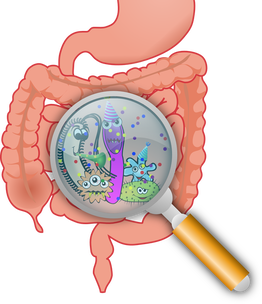
12- Treating diarrhea:
Raw honey may have a soothing effect on digestion, helping with symptoms of diarrhea.
A study of 150 children with acute gastroenteritis found that those who received honey with an oral re-hydration solution had a better recovery from diarrhea than those who did not receive honey. The children who received honey had fewer bowel movements and recovered faster from the illness.
To help treat mild diarrhea, try taking a teaspoon of raw honey or mixing honey with a drink. Avoid taking too much honey because excess sugar can make diarrhea worse.
Raw honey may have a soothing effect on digestion, helping with symptoms of diarrhea.
A study of 150 children with acute gastroenteritis found that those who received honey with an oral re-hydration solution had a better recovery from diarrhea than those who did not receive honey. The children who received honey had fewer bowel movements and recovered faster from the illness.
To help treat mild diarrhea, try taking a teaspoon of raw honey or mixing honey with a drink. Avoid taking too much honey because excess sugar can make diarrhea worse.

13- Protecting the brain:
Some evidence suggests that honey may have antioxidant and anti-inflammatory powers that can benefit the brain. An animal study found that rats that consumed honey had protection against brain damage caused by exposure to lead.
In addition, a review states that raw honey may contain ingredients that help fight inflammation in the hippocampus, a part of the brain involved in memory.
Some evidence suggests that honey may have antioxidant and anti-inflammatory powers that can benefit the brain. An animal study found that rats that consumed honey had protection against brain damage caused by exposure to lead.
In addition, a review states that raw honey may contain ingredients that help fight inflammation in the hippocampus, a part of the brain involved in memory.
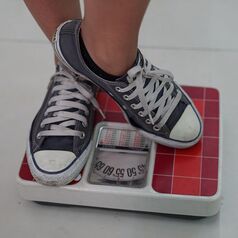
14- Useful in weight Management:
Did you know you can use Honey for Weight management? According to the famous author and nutritionist Mike McInnes, honey burns body fat even while when you are sleeping. It is one of the best foods for losing weight. Doctors recommend to have a spoonful of honey before going to bed. You can also consume a little honey with warm water on empty stomach early in the morning. Having it first thing in the morning, helps increase the metabolism, which in turn helps reduce weight faster. Honey is also good for improving your overall health.
Did you know you can use Honey for Weight management? According to the famous author and nutritionist Mike McInnes, honey burns body fat even while when you are sleeping. It is one of the best foods for losing weight. Doctors recommend to have a spoonful of honey before going to bed. You can also consume a little honey with warm water on empty stomach early in the morning. Having it first thing in the morning, helps increase the metabolism, which in turn helps reduce weight faster. Honey is also good for improving your overall health.

15- Nourishes your skin and face:
Using Honey for skin is very useful because of its moisturizing and nourishing properties. Honey is the best natural moisturizer, especially for your dry skin and it is also very easy to apply. Raw honey not only unclogs pores but it also helps moisturize parched skin. It also helps curing cracked lips during winters. Many people also use honey masks for skin tone correction. Also being a natural antiseptic, it is useful for treatment of wounds, bruises, cuts, burns and other infections. Learn more about how honey can be used as one of the effective
Using Honey for skin is very useful because of its moisturizing and nourishing properties. Honey is the best natural moisturizer, especially for your dry skin and it is also very easy to apply. Raw honey not only unclogs pores but it also helps moisturize parched skin. It also helps curing cracked lips during winters. Many people also use honey masks for skin tone correction. Also being a natural antiseptic, it is useful for treatment of wounds, bruises, cuts, burns and other infections. Learn more about how honey can be used as one of the effective

16- Boosts your memory:
We are what we eat and hence it is very important to consume foods that help make our mental health strong to sustain in old age. Honey, the eternal sweetener has numerous health benefits, one of which includes boosting memory and concentration. Honey not only increases brain power and memory but also makes you a healthier person altogether. Consumption of honey prevents metabolic stress and helps calm and soothe the brain, which helps in augmenting memory in the long run. The natural antioxidants and therapeutic properties in honey help in boosting brains’ cholinergic system and circulation and receding cells that cause memory loss.
We are what we eat and hence it is very important to consume foods that help make our mental health strong to sustain in old age. Honey, the eternal sweetener has numerous health benefits, one of which includes boosting memory and concentration. Honey not only increases brain power and memory but also makes you a healthier person altogether. Consumption of honey prevents metabolic stress and helps calm and soothe the brain, which helps in augmenting memory in the long run. The natural antioxidants and therapeutic properties in honey help in boosting brains’ cholinergic system and circulation and receding cells that cause memory loss.

17- Acts as a Natural Sleeping Aid:
Having trouble falling asleep? You should try drinking this beverage made of warm milk and honey just before you sleep. For centuries, people have used this drink to help them sleep. This beverage is fairly easy to make. All you need to do is add a teaspoon of Dabur Honey into a glass of hot milk, or add 1 or 2 teaspoons of Dabur Honey to a cup of chamomile tea and sip to induce sleep.
Having trouble falling asleep? You should try drinking this beverage made of warm milk and honey just before you sleep. For centuries, people have used this drink to help them sleep. This beverage is fairly easy to make. All you need to do is add a teaspoon of Dabur Honey into a glass of hot milk, or add 1 or 2 teaspoons of Dabur Honey to a cup of chamomile tea and sip to induce sleep.
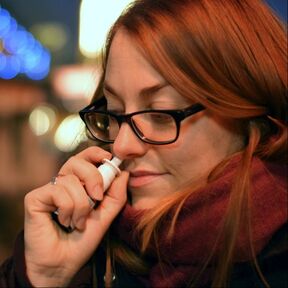
18- Eases sinus issues:
With increasing pollution and dust many people these days suffer from sinus related issues. Sinuses are small cavities in the skull that produce mucus to guard the respiratory system from allergies and infections. When we suffer from infections the viruses block the sinus, traps the air and mucus which causes distress. Honey on the other hand is a natural anti-bacterium and anti-septic that helps to clear the infections and reduce inflammations. Honey also soothes throat and reduces coughs and strengthens the immune system thereby causing less sinus attacks.
With increasing pollution and dust many people these days suffer from sinus related issues. Sinuses are small cavities in the skull that produce mucus to guard the respiratory system from allergies and infections. When we suffer from infections the viruses block the sinus, traps the air and mucus which causes distress. Honey on the other hand is a natural anti-bacterium and anti-septic that helps to clear the infections and reduce inflammations. Honey also soothes throat and reduces coughs and strengthens the immune system thereby causing less sinus attacks.
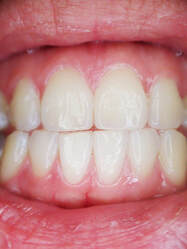
19- Helps with gum diseases:
Honey’s anti-bacterial and infection healing properties help in treating and healing wounds. Teeth and gum diseases like gingivitis, bleeding and plaque can be treated to a great extent with the regular use of honey. Honey is known to release antiseptic hydrogen peroxide which acts as anti-microbial agent that prevents the growth of bacteria. Experts’ advice the use of raw honey mixed with water to be used as mouthwash. Also rubbing honey directly on affected gums gives instant relief from pain and inflammation and other periodontal diseases.
Honey’s anti-bacterial and infection healing properties help in treating and healing wounds. Teeth and gum diseases like gingivitis, bleeding and plaque can be treated to a great extent with the regular use of honey. Honey is known to release antiseptic hydrogen peroxide which acts as anti-microbial agent that prevents the growth of bacteria. Experts’ advice the use of raw honey mixed with water to be used as mouthwash. Also rubbing honey directly on affected gums gives instant relief from pain and inflammation and other periodontal diseases.

20- Natural Energy Drink:
Honey is known as an excellent source of natural energy as the natural unprocessed sugar present in it enters the bloodstream directly and this in turn can give a quick boost of energy. This quick boost works like a wonder for your workout, especially in longer endurance exercises.
Honey is known as an excellent source of natural energy as the natural unprocessed sugar present in it enters the bloodstream directly and this in turn can give a quick boost of energy. This quick boost works like a wonder for your workout, especially in longer endurance exercises.
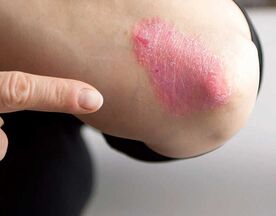
21- Prevents and helps control Eczema:
Eczema is a skin condition that causes red, itchy, flaky skin that causes discomfort. Usually, young children and teenagers suffer from eczema that can be treated with eczema. Those suffering can make a mixture of raw honey and cold-pressed olive oil and apply on the skin to get rid of the problem. Honey acts as a natural cleanser by removing dirt and making the skin smooth and soft. It can also be used for exfoliation of the skin by mixing it with oats in order to remove dead cells. Regular use of honey prevents eczema from occurring or coming back again.
Eczema is a skin condition that causes red, itchy, flaky skin that causes discomfort. Usually, young children and teenagers suffer from eczema that can be treated with eczema. Those suffering can make a mixture of raw honey and cold-pressed olive oil and apply on the skin to get rid of the problem. Honey acts as a natural cleanser by removing dirt and making the skin smooth and soft. It can also be used for exfoliation of the skin by mixing it with oats in order to remove dead cells. Regular use of honey prevents eczema from occurring or coming back again.
Practical Tips:
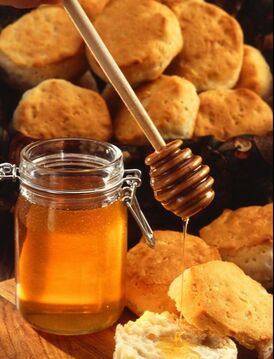
When raw honey turns to ‘sugar’:
Raw honey may crystallize after a few months of storage. This means that the honey gets a grainy or sugar-like texture. Crystallized honey is safe to eat and has the same taste.
To make the honey liquid again, use a gentle heating technique:
Boil a pot of water and remove it from the heat.
Place the container of honey in the hot water. Do not allow the water to reach the top of the honey container to avoid contaminating it.
Remove the container of honey after a few minutes. If it is still solid or crystallized, repeat the process.
Do not microwave raw honey or put it directly in boiling water or on a hot stove top, as this may destroy some of its nutrients.
Raw honey may crystallize after a few months of storage. This means that the honey gets a grainy or sugar-like texture. Crystallized honey is safe to eat and has the same taste.
To make the honey liquid again, use a gentle heating technique:
Boil a pot of water and remove it from the heat.
Place the container of honey in the hot water. Do not allow the water to reach the top of the honey container to avoid contaminating it.
Remove the container of honey after a few minutes. If it is still solid or crystallized, repeat the process.
Do not microwave raw honey or put it directly in boiling water or on a hot stove top, as this may destroy some of its nutrients.
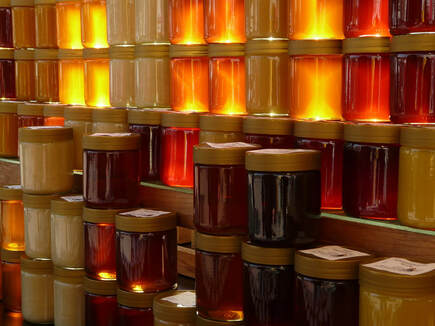
Choosing the right kind of honey:
Raw honey will have a label that reads “raw honey.” If the label does not include the word “raw,” or does not come directly from a farmer or beekeeper who can confirm that it is raw, the manufacturer has probably pasteurized it.
The label may also describe the type of flowers that the bees pollinated to make that honey. The kind of flower determines the taste, color, and antioxidant and vitamin content of the honey.
Many types of pasteurized honey have labels that read “pure honey.” Others may say “clover honey” or may state that they come from a local area. Even products labeled as “organic honey” may not be raw, as some manufacturers do pasteurize organic honey.
Some processed honey products contain high fructose corn syrup or other additives. Check the label to make sure the honey is pure.
Raw honey has become more popular in recent years, and people can now buy it from many grocery and health food stores. Farmers’ markets also sell raw honey, sometimes directly from the beekeeper.
Raw honey will have a label that reads “raw honey.” If the label does not include the word “raw,” or does not come directly from a farmer or beekeeper who can confirm that it is raw, the manufacturer has probably pasteurized it.
The label may also describe the type of flowers that the bees pollinated to make that honey. The kind of flower determines the taste, color, and antioxidant and vitamin content of the honey.
Many types of pasteurized honey have labels that read “pure honey.” Others may say “clover honey” or may state that they come from a local area. Even products labeled as “organic honey” may not be raw, as some manufacturers do pasteurize organic honey.
Some processed honey products contain high fructose corn syrup or other additives. Check the label to make sure the honey is pure.
Raw honey has become more popular in recent years, and people can now buy it from many grocery and health food stores. Farmers’ markets also sell raw honey, sometimes directly from the beekeeper.
Bee Pollen is Impressive Nutritional Profile With More Than 250 Active Substances
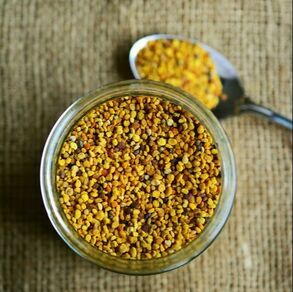
You can consume bee pollen together with honey in smoothies or just on a slice of bread for example.
You can buy it dried or fresh (frozen or unfrozen).
Read more about the benefits of Bee Pollen here.
You can buy it dried or fresh (frozen or unfrozen).
Read more about the benefits of Bee Pollen here.
Risks:

Centers for Disease Control and Protection (CDC):
As long as a person is not allergic to bee pollen, raw honey is generally safe to use.
The Centers for Disease Control and Protection (CDC) say that people should not give honey to infants under the age of 1 because of the risk of infant botulism. Honey is safe from the age of 1 upwards. This applies to both raw and regular honey.
As long as a person is not allergic to bee pollen, raw honey is generally safe to use.
The Centers for Disease Control and Protection (CDC) say that people should not give honey to infants under the age of 1 because of the risk of infant botulism. Honey is safe from the age of 1 upwards. This applies to both raw and regular honey.
During honey farming bees are not always well treated:
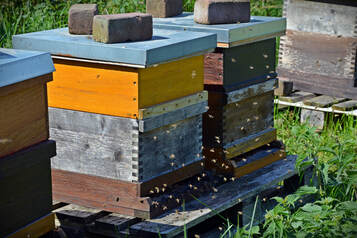
Just like pigs, cows, chickens, and other animals who are factory-farmed, bees are often treated poorly, injured, and forced to live in cramped conditions, and they must endure the stress of being transported.
When a new queen bee is about to be born, a process called “swarming” occurs, when the old queen and half the colony leave their home. They set up in a new place that worker bees have found for them to begin a new colony. Since swarming means that less honey will be produced, many beekeepers try to prevent it—often by clipping the delicate wings of the new queen or killing and replacing the older queen.
When bee farmers collect honey, they’re often careless and end up tearing off the bees’ sensitive wings and legs. Farmers also cut off the queen bee’s wings to make sure that she can’t leave the hive. Can you imagine if someone ripped off your arms or legs? Talk about ouch!
So try to buy honey from a farmer you know or look for fair tirade certificate or something similar. Just like all other products you by.
When a new queen bee is about to be born, a process called “swarming” occurs, when the old queen and half the colony leave their home. They set up in a new place that worker bees have found for them to begin a new colony. Since swarming means that less honey will be produced, many beekeepers try to prevent it—often by clipping the delicate wings of the new queen or killing and replacing the older queen.
When bee farmers collect honey, they’re often careless and end up tearing off the bees’ sensitive wings and legs. Farmers also cut off the queen bee’s wings to make sure that she can’t leave the hive. Can you imagine if someone ripped off your arms or legs? Talk about ouch!
So try to buy honey from a farmer you know or look for fair tirade certificate or something similar. Just like all other products you by.
Sources: www.healthline.com ; www.medicalnewstoday.com ; www.dabur.com ; www.petakids.com

